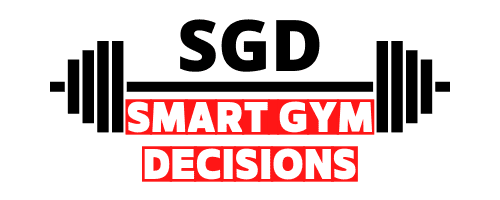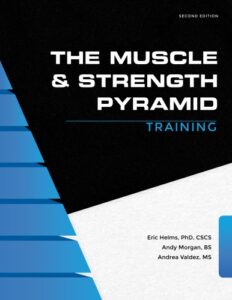If you’re looking to build lower body strength and shape, then look no further than the best dumbbell glute exercises around! These exercises are essential if you want to build a strong, well-rounded lower body that will help with activities ranging from everyday life to athletics. This article is going to provide an overview of some of the best dumbbell glute exercises out there to help you get the most out of your glute workout. So let’s get started!
First, we’ll cover some of the basics when it comes to glute exercises. For starters, make sure you’re using the proper form and technique when performing these exercises. This is key to ensure that your muscles are being worked in the right way and helping you achieve the best results. Additionally, focus on keeping your core engaged and maintaining proper control throughout the entire movement. This will help prevent injuries and ensure that you are targeting the right muscles with each exercise.
Benefits of Dumbbell Glute Exercises
Now that we’ve covered some of the basics, let’s dive into the benefits of these exercises. Dumbbell glute exercises can help build strength and shape in your lower body while also providing a variety of other advantages. These include increased muscular development, improved aesthetics, and enhanced athletic performance. Additionally, these dumbbell exercises will also help you strengthen the stabilizing muscles around your hips and core which will improve your balance and stability.
So if you’re looking to get the most out of your workout routine, then make sure to add some dumbbell glute exercises into your regimen! With proper form and technique as well as dedication to the process, these dumbbell exercises will help take your lower body strength and shaping goals to new heights!
Strengthening your glutes through training can enhance your hip mobility and glute strength. This can aid in better knee stability and ankle mobility by reducing the reliance of these body parts on compensating for inadequate front hip joint and poor back hip joint mobility.
By doing the exercises below to improve glute strength and hip mobility, you can reduce lower back pain and improve posture and core stability. Limited glute bridges and hip mobility puts additional strain on the lower back, which can lead to pain in the future.
By increasing the strength of your lower body and glutes, you can improve your balance and agility. This allows you to quickly shift your weight and change direction when needed. Strengthening and building mass in your glutes can specifically help improve your ability to change direction at high speed.
Training your glutes for strength can enhance your ability to run faster and more efficiently. It does this by improving neuromuscular coordination and boosting power output from strong glutes. Additionally, it increases your running efficiency by promoting better movement coordination and stride efficiency.
Dumbbell Hip Thrust
The dumbbell hip thrust is a great way to target the glutes and other muscles in your lower body.
Although the dumbbell hip thrust can be challenging due to the weight, some lifters may find it more comfortable than using a barbell. Despite this disadvantage, performing the exercise with higher repetitions and maximum glute contraction can still help build strength and mass in your glutes.
To perform dumbbell Hip Thrusts
1. Sit with your back against a bench in front of you.
2. Hold a dumbbell on your pelvis with both hands.
3. Push your feet and back towards the bench and do a hip extension.
4. Your shoulder blades should rest on the bench and your upper body and hips must be in a straight line.
5. Lower your glutes towards the ground while maintaining a steady upper body.
6. Extend your core tight glutes to lockout position, reset, and repeat the process.
Variations & Modifications for Different Fitness Levels
If you are new to this exercise, you can start with an unloaded version or by using resistance bands instead of dumbbells. Additionally, you can reduce the range of motion to less than 90 degrees in order to reduce the tension on your glutes.
For advanced lifters, you can increase the weight and range of motion to challenge your glutes further. You can also perform unilateral hip thrusts with one leg at a time and perform a hip extension or use other variations such as pause reps, tempo reps, or single-leg reps.
Dumbbell Bulgarian Split Squat
The Bulgarian split squat is an exercise that challenges your glutes and quads through a wider range of motion than other exercises on this list because one foot is elevated. This is also a unilateral exercise, meaning it can help improve strength imbalances and enhance your leg drive. If you are looking for one accessory exercise to boost your performance in squats and deadlifts, the Bulgarian split squat is the way to go.
To perform Bulgarian split squats:
1. Pick one or two dumbbells of your liking and hold them in a comfortable position while keeping your chest up and shoulders down.
2. Put your back foot on an elevated surface and adjust the position of your front foot as per your comfort.
3. Bend your knees, left leg, back knee towards the ground and perform a squat with your right knee and front leg. Make sure to maintain a slight forward lean.
4. To return to the initial position, push your front foot towards the ground. Then, reset and redo the exercise.
For maximum glute activation, focus on driving through the heel of your front foot and squeezing your glutes at the top of each rep. Additionally, you can pause for just a few inches or couple seconds on the bottom position to increase time under tension and further challenge your glutes. Also, make sure to keep your spine in a neutral position throughout the exercise to prevent injuries.
Dumbbell Sumo Squat
The sumo squat is a simple squat variation that is effective for working your glute muscles alone. It involves holding the weight close to your muscles and takes advantage of the wider stance to better engage your glutes. It is relatively easy to perform, which means you can perform more reps for better glute development potential. You can perform it with either one dumbbell or two, depending on your desired goals.
Here are the steps for Dumbbell Sumo Squats
1. Hold one dumbbell in each hand or down by your side or two dumbbells in front of your body.
2. Position your feet wider than hip-width apart and turn them outward.
3. Maintain good posture by keeping your chest up and shoulders down. Then, squat down until the dumbbell(s) touch the ground.
4. Take a brief pause, then push through the floor with your feet and stand up straight.
5. Repeat this movement for the desired number of repetitions.
Variations and Challenges
For an extra challenge, you can add a tempo variation. Try performing the exercise in slow motion to really target your glutes and inner thighs. You can also add additional challenges by increasing the weight of the dumbbells or doing single-leg variations such as lunges and step-ups. This will help increase your balance, mobility, and strength.
Dumbbell Reverse Lunge
If you have knee pain, try doing reverse lunges instead of other types of lunges. Stepping back puts more focus on your glutes, which can help improve hip mobility and benefit your squats and deadlifts. Reverse lunges also help balance out your other leg and muscles.
Steps to perform a dumbbell reverse lunge
1. Begin by standing with your feet hip-width apart while holding one or two dumbbells.
2. Take a step backwards with your left foot, either a small or large step, and lower your hips until your right thigh is parallel to the ground.
3. Keep your chest up and shoulders down while leaning forward slightly.
4. Pause briefly before pushing through your right foot to return to the starting position.
5. You can either alternate sides or complete all repetitions on one side before switching to the opposite side.
Tips for Maximizing Glute Engagement
In order to maximize the glute engagement with this exercise, you should focus on feeling your glutes while performing the movement. Make sure to keep your hips square and engage your core as well. Avoid letting your knees cave inwards and instead focus on driving through heels. Try adding a tempo variation or increasing weight in order to increase difficulty.
Dumbbell Step-Up
The dumbbell step-up is a straightforward exercise for one leg that effectively targets the glutes with a wide range of motion. It is considered one of our top glute exercises because it activates the glutes significantly.
The step-up exercise offers modification options to accommodate different skill levels. Simple adjustments such as the height of the box and using one or two dumbbells can make the exercise more or less challenging depending on personal goals. Moreover, it’s helpful for developing explosive leg power that’s beneficial for jumping and running. Furthermore, minimal strain is placed on the knees because of the way the calf muscles are utilized.
To perform Weighted Step Ups
1. Stand in front of a box with one or two dumbbells in your hands.
2. Put one of your back feet flat on the box and step up, using your front foot to push until your knee is completely straight.
3. Then, bring down your other leg slowly and place it back on the floor.
4. Reset your starting position and repeat the exercise.
It is important to complete all repetitions on one side before switching to the opposite side. This ensures that all muscle fibers are activated and worked effectively. Additionally, keep your posture upright with a neutral spine throughout the entire movement for maximal glute activation and engagement.
Dumbbell Romanian Deadlift
The dumbbell romanian deadlift (RDL) is a variation of the barbell RDL with a lighter weight load. However, it requires more grip strength. While the barbell RDL allows for heavier weights, the dumbbell RDL is still a viable option.
The romanian deadlift provides constant tension to the glutes and hamstrings as the dumbbell remains off the ground. Additionally, choosing different positions for the dumbbells, such as directly in front or to the sides of the legs, can adjust the angles of the exercise and better target specific areas.
For Dumbbell RDLs, follow these steps
1. Stand with your feet hip-width apart and grip two dumbbells with an overhand grip in front of your quads.
2. Keeping your chest up and shoulders down, hinge at your hips until the dumbbells reach below, bend your knees slightly, while maintaining a neutral spine.
3. After a brief pause, engage your hamstrings and glutes to return to a standing position and squeeze your glutes at the top.
4. Repeat for the desired number of reps.
Tips for maximizing glute engagement
1. Focus on keeping your chest up and shoulders down throughout the exercise to maintain proper form.
2. Use a slow and controlled motion when lowering and raising the dumbbells to maximize time under tension and ensure all muscle fibers are activated and worked effectively.
3. Squeezing your glutes at the top of the movement can increase your range and intensity of the exercise.
4. Variations such as adding a slight pause at the bottom, changing hand positions, or adjusting grip width can all increase difficulty and challenge your glutes further.
Dumbbell Single-Leg RDL
The Single-leg romanian deadlift is a demanding exercise that requires a good balance, but it is very beneficial once you become proficient at it. Its advantages are reducing muscle imbalances, preventing hamstring strains, improving balance, and promoting glute hypertrophy. You should begin with your body weight and proceed to using dumbbells after perfecting the technique.
Here are the steps to do Single Leg RDLs
1. Hold one or two dumbbells either in front of you or beside your quads.
2. Lift one foot off the floor and balance on that foot while keeping your working knee slightly bent.
3. Keep your arms straight, chest up and shoulders down as you hinge back. Make sure not to rotate feet shoulder width with hip thrust from your working hip upwards.
4. Continue to hinge right leg until your belly button is parallel with left leg straight, knee on the floor. You should feel a stretch in your hamstring.
5. Once you’ve reached the parallel position, stabilize and return to the starting position before repeating the exercise.
Incorporating Dumbbell Glute Exercises into a Workout
Now that you know the types of exercises that target the glutes, here are some suggestions on how to structure glute workouts.
A suggested routine could look like this:
1. Squat or RDL – 3 sets of 10 reps with 60 seconds rest in between sets.
2. Single leg hip thrust – 3 sets of 10 reps per side dumbbell hip thrust with 60 seconds rest in between sets.
3. Step Up – 2 sets of 10 reps on each side with 45-60 seconds rest in between sets.
4. Glute Bridge – 2-3 sets of 10 reps with 45 seconds rest in between sets.
5. Single Leg Deadlift – 2 sets of 10 reps on opposite leg on each side with 30-45 seconds rest in between 6ets.
6. Fire Hydrants – 2-3 sets of 10 reps on each side with 45 seconds rest in between sets.
When performing these exercises, make sure to use a weight that is challenging but not too heavy for you to maintain proper form and technique throughout the entire set. Additionally, it is important to take sufficient rest in between sets as this will give your muscles time to recover and build new muscle fibers, leading to increased strength and size gains.
Finally, remember that consistency is key when it comes to achieving your desired results – so make sure you stick to your routine!
Dumbbell Glute Exercises FAQS
Q: How often should I do glute exercises?
A: Ideally, you should aim to do glute training exercises 2-3 times per week as this will help keep your muscles activated and prevent them from becoming “lazy”. Additionally, adding in a few sets of glute activation exercises prior to your regular workouts can also be beneficial for improving overall strength and performance in the gym.
Q: What is the best way to target my lower glutes?
A: The best way to target your lower glutes is by incorporating single leg exercises such as squatting on one leg or performing single leg deadlifts with a dumbbell in each hand while maintaining good form throughout the exercise. These types of exercises force each side of your glutes to do the work individually, helping you build strength and size in your lower glutes.
Q: What is the best way to warm-up prior to glute exercises?
A: Warming up prior to any type of exercise is important as this will help improve your flexibility and mobility, reducing the risk of injury. A good warm-up may include foam rolling or dynamic stretching for your glutes, hips, and legs followed by some light cardio such as jogging or jumping rope.
Q: Are there any specific glute exercises I should avoid?
A: There isn’t necessarily a “one size fits all” approach when it comes to glute exercises, but in general you may want to avoid exercises that involve excessive bouncing (such as jump squats) and overly heavy weight which can result in poor form and places extra strain on your joints. Also, if you are just starting out then it may be best to avoid exercises such as barbell squats and hip thrusts as these require more coordination and stability. You can also try dumbbell donkey kicks and the lateral lunge.






